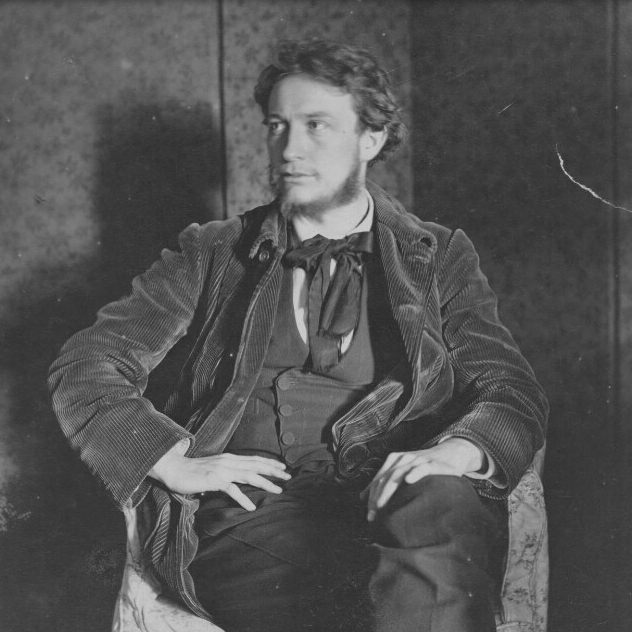
Biography | Exhibitions | Available work | Media
Register interest
Henry Lamb was born in Adelaide, Australia in 1883 shortly before his father moved the family to Manchester having taken a post in the Mathematics department of Manchester University. He grew up in Manchester as one of seven children to Professor Horace Lamb and his wife, Mary. He first studied medicine before abandoning his studies to be an artist. Aged twenty two he left for London to study under Augustus John and William Orpen at their short-lived Chelsea Art School.
John was particularly formative in those early years and it was with John that Lamb moved to Paris a few years later. While living in Paris Lamb spent a couple of summers on the South coast of Brittany, where he painted the extraordinary, devastating ‘Death of a Peasant’. Lamb had followed a long line of artists travelling from Paris to Brittany in search of a more traditional way of life that was seen as visible here long after it had disappeared elsewhere. It was with this view that Lamb travelled to Gola Island in Northern Ireland a couple of years later. Once back in London Lamb joined the Fitzroy group and was a founding member of both The Camden Town Group and The London Group. He had arrived in London in 1905 with Nina Forrest, nicknamed Euphemia, who became a infamous figure in the Bloomsbury Group. They married in 1906 but separated shortly after. He was friendly with the Bloomsbury group having known Vanessa Stephen and Clive Bell from his early days in the city, but he often had little patience with the group and could be quite disdainful. The eminent critic and biographer Lytton Strachey was however a good friend and between 1912 and 1914 sat for a portrait that would become one of Lamb’s greatest works. It now resides in the Tate and was described by Sir John Rothenstein as “one of the best portraits painted in England in this century”.
With the outbreak of the first world war Lamb returned to his study of medicine and served as a doctor in the Royal Army Medical Corps in France, Salonika and Palestine where he was awarded the Military Cross. He was not an official war artist but was always sketching and drawing in spare moments. These sketches with memories from his time on the Macedonian Front and the Palestine campaign formed the basis of large-scale paintings made after the war. ‘Irish Troops in the Judaen Hills’, now in the Imeperial War Museum, and ‘Advanced Dressing Station on the Struma’ for Manchester City Art Gallery are amongst the most extraordinary of his career. In 1928 he married Lady Pansy Pakenham and moved to the quiet Wiltshire village of Coombe Bissett where they would remain for the rest of their lives. Lamb was appointed an official war artist for the second world war and after first wanting to document the war cabinet decided on portraits of soldiers and studies of servicemen at work across the South of England. At the same time as his appointment as a war artist Lamb was elected as an associate of the Royal Academy and a Trustee of both the National Portrait Gallery and the Tate. He was finally awarded full membership of the Royal Academy in 1949.
Interest in Lamb’s work has revived in recent years, and he has been the subject of recent exhibitions at Salisbury Museum, and Poole Museum. His work can be found in collections across the country and around the world, including the Tate, the Imperial War Museum, the British Government Art Collection and the National Gallery of Canada.